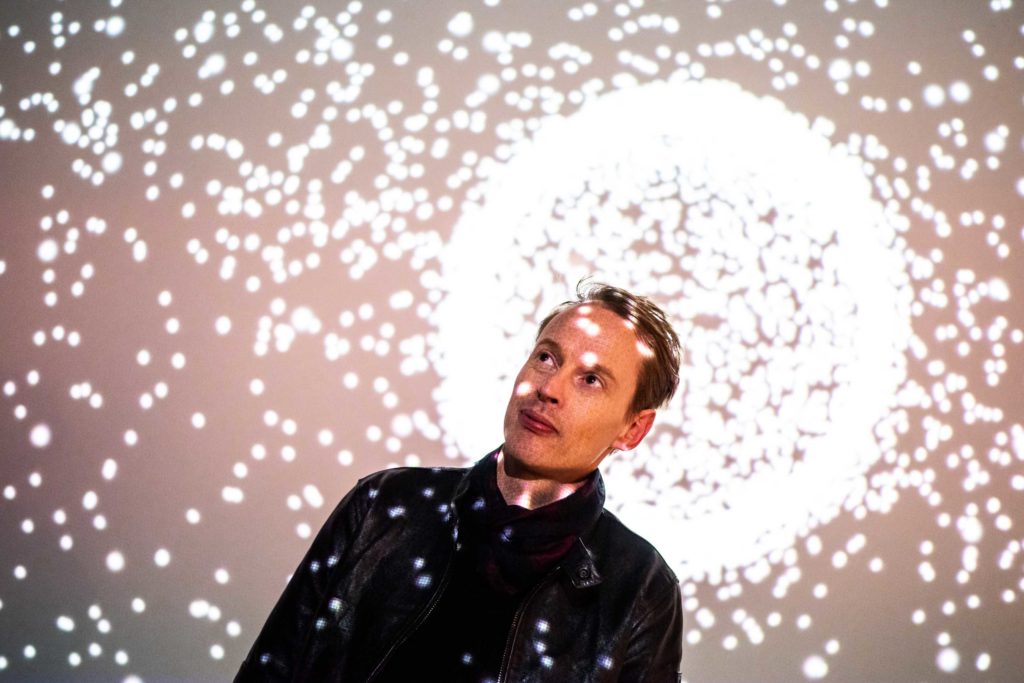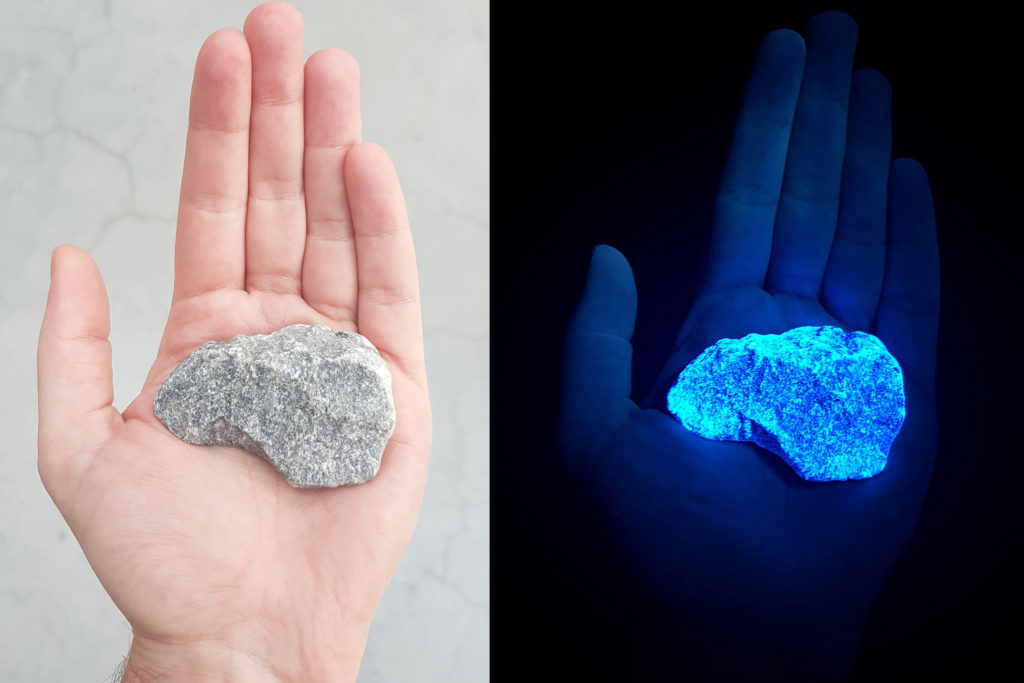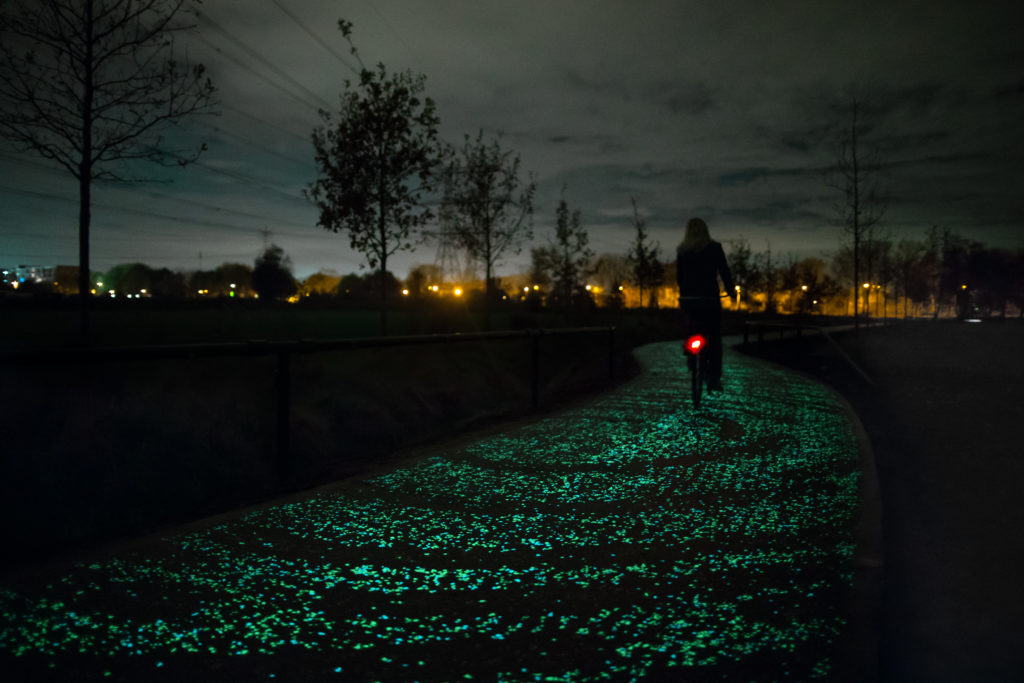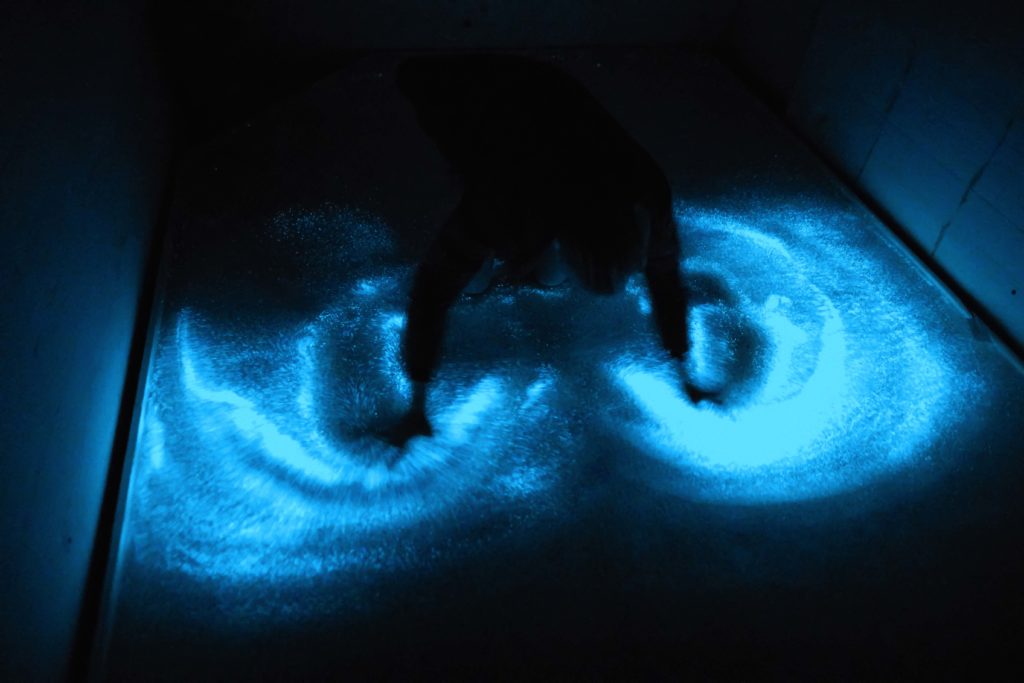People
How a Dutch Artist and Engineer Created an Otherworldly New Holocaust Memorial Using 104,000 Glowing Stones
Each of the Dutch designer and engineer's glowing stones represents a World War II Dutch-Jewish victim.

Each of the Dutch designer and engineer's glowing stones represents a World War II Dutch-Jewish victim.

Nina Siegal

When he was asked to create a memorial to the 104,000 Jewish, Roma, and Sinti people from the Netherlands who were killed during the Holocaust, Daan Roosegaarde hesitated. The Dutch artist, engineer, and master of light-based art and design was not sure at first whether to accept such a delicate and complicated assignment.
“It was a big discussion in my studio,” he tells Artnet News of the commission, which commemorates the 75th anniversary of the liberation of Auschwitz this year. “It’s such a big topic and it’s very sensitive, of course. We were thinking, ‘Should we do this or not?’”
But then, as he always does, Roosegaarde delved into the research. He read about the World War II-era persecution, mass deportation, and murder of Dutch residents, and he spoke to survivors and the families of victims. He looked at other memorial sites, including Amsterdam’s planned Dutch Holocaust Memorial of Names, which is being helmed by the Polish-American architect Daniel Libeskind.
One of the stories he says he heard a few times was about passengers on a train to Westerbork, a concentration camp in the northeast of the country. The wooden door to their train compartment did not fully close, and light leaked through a small gap at the top. Everyone was looking at that slanting light, he learned. “Because there was light, there was hope,” says Roosegaarde. “And that’s my vocabulary.” With that, the so-called master of light confirmed his participation in the project. (Scholar David Barnouw points out that deportations by cattle train to Westerbok were infrequent, but rather occurred from the concentration camps to the death camps farther east.)
Next week, the fruits of his labor, the Holocaust memorial project “Levenslicht,” will be unveiled to the public on January 16 in Rotterdam. Some 104,000 glowing stones, small enough to hold in your hand, will be seen together as a monumental installation before individual groups of 500 are disseminated to 256 municipalities, where they will continue to glow at night in memory of the lives lost across the country.

Levenlicht stones. Courtesy Studio Roosegaarde.
Be it digital, natural, or phosphorescent, illumination is Roosegaarde’s medium of choice. Although he’s working with brand new technologies, the 41-year-old says that he connects his work to the hallowed Dutch tradition of working with light, which was established in the 17th century by landscape painters like Jan van Goyen and Salomon von Ruysdael, his personal hero.
“They used paint and canvas and I use microchips and LEDs,” Roosegaarde says. “It’s the same message, but just a different language. They were obsessed with skies, with [natural] light, and they ran their painting workshops as collectives. I feel very much connected to the Dutch landscape tradition, how they think, how they work, and how they dream.”
The multi-talented creative is as acclaimed for urban design projects, such as his sustainable glow-in-the dark Smart Highways and his “starry night” Van Gogh-inspired bike path, as he is for his wildly popular museum exhibitions that plunge viewers into baths of light.
An exhibition of his work at the Groninger Museum, titled “Presence” and on view until January 12, features a phosphorescent landscape that changes color and shape as visitors move around it; bodies are cast into lingering shadows on walls and floors, outlines of hands are mapped onto movable globes, and children make snow angels in dustings of glowing beads. It’s very Instagram-ready.

Van Gogh Bikepath is a light emitting bicycle path which charges at day-time and glows at night. It won the Best Future Concept, Dutch Design Award, Accenture Innovation Award, and INDEX Award Denmark. Courtesy Studio Roosegaarde.
Roosegaarde sees his work not as merely playful uses of new technologies, but as a way to address societal and environmental concerns. “I think of us as living not in a utopia, but in a protopia—a term [American writer and editor] Kevin Kelly coined,” he says. “Step-by-step, we’re trying to improve things. We do not know what the future looks like, so we need to invest in new ideas to survive and to evolve.”
Roosegaarde’s studio, which is located in a former glass factory in the port city of Rotterdam, has been focusing its efforts on imagining new landscapes that value clean air, clean water, and clean energy. “[B]ut there is something beyond those values, [which is] humanity, and that’s why [the memorial project] ‘Levenslicht’ is connected,” he adds.
The upcoming monument takes its name from the Dutch words for “living light” or “the light of life.” Each of the 104,000 luminous stones, which represents a Dutch victim of the Holocaust, emits an ethereal, bluish glow in the dark. Roosegaarde says the concept is based on the idea of creating light in darkness as a metaphor for hope in a time when nationalism, xenophobia, and acts of hate are on the rise throughout the Western world.
“We’ll have one big statement, where you see the madness, the killing machine,” he says. “Then you’ll see how it spread.” After the stones’ reveal, groups will be distributed at various outdoor locations in participating towns.

Glowing Nature is an interactive installation with light emitting algae. Courtesy Studio Roosegaarde.
Roosegaarde said he was shocked to learn that the victims came from all over the Netherlands, hailing from almost every town or city. About 80 percent of the Dutch-Jewish population was killed in the World War II genocide, the largest proportion in Western Europe, second only to Poland. The idea for the small stones stemmed from Roosegaarde learning that Jewish mourners do not leave flowers at Jewish cemeteries, but instead place stones or pebbles on the gravestones of the dead. Each of his stones, which can fit in the palm of a hand, is unique.
“It’s something new but it’s something old, it’s history but it’s also the future,” he says of the project. “It’s also a place where we can come together, where we don’t use words or logos or political ideas or conversation, but we just look and wonder. I hope it will create the kind of experience of remembering and thinking about what we want the future to look like.”
Levenslicht will be on view in Rotterdam beginning January 16 at Stieltjesstraat/ Eva Cohen-Hartogkade.